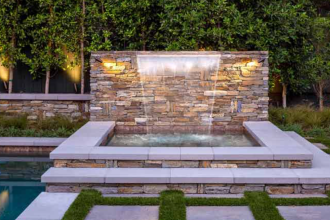Building a deck can significantly enhance the outdoor living space of your home, providing a perfect area for relaxation, entertainment, and enjoying nature. However, to ensure your deck is safe, durable, and stands the test of time, careful planning and execution are crucial. Here are some expert tips from seasoned deck builders to guide you through the process of constructing a reliable and attractive deck.
Planning Your Deck
Determine the Purpose and Design
Before you begin construction, it’s important to clearly define the purpose of your deck. Will it be used for hosting gatherings, relaxing with family, or as a peaceful retreat? The purpose will influence the size, layout, and features of your deck. Sketch a design that incorporates these elements while complementing the architectural style of your home.
Choose the Right Materials
Selecting the appropriate materials is critical for the longevity and safety of your deck. Common options include pressure-treated wood, composite decking, and natural hardwoods like cedar or redwood. Each material has its own advantages and maintenance requirements:
- Pressure-Treated Wood: Cost-effective and durable, but requires regular maintenance to prevent warping and decay.
- Composite Decking: Low maintenance and long-lasting, but can be more expensive upfront.
- Natural Hardwoods: Lovely and robust, but to keep their look, they might need to be stained or sealed on a regular basis.
Understand Local Building Codes
Learn the local building laws and regulations before you begin construction. These codes ensure that your deck is built to safety standards, including proper structural support, railing heights, and stair dimensions. Obtain any necessary permits and inspections to avoid legal issues and ensure your deck is safe for use.
Building a Strong Foundation
Prepare the Site
A solid foundation begins with proper site preparation. Clear the area of any vegetation, rocks, or debris. Level the ground where the deck will be constructed, ensuring proper drainage to prevent water from pooling underneath. For sloped sites, you may need to build retaining walls or use a pier system to create a level base.
Install Footings and Piers
Footings and piers provide the support needed for a stable deck. To avoid movement during freeze-thaw cycles, excavate the footings’ holes to the depth specified by the local construction codes, which is usually below the frost line. After pouring concrete into the holes, fasten the posts with metal brackets. Let the concrete set completely before moving forward.
Use Quality Fasteners
The fasteners you use are just as important as the materials. Opt for galvanized or stainless steel screws, nails, and bolts to prevent rust and corrosion. Over time, these fasteners will aid in preserving the structural integrity of your deck because they are made especially to endure outside environments.
Framing the Deck
Construct the Ledger Board
The ledger board is a critical component that attaches the deck to your house. Ensure it is securely fastened to the house’s framing using lag bolts or through-bolts. Flashing should be installed above the ledger board to prevent water infiltration, which can cause rot and compromise the structure.
Build the Joists and Beams
Joists and beams form the framework that supports the decking boards. Space the joists according to the decking material specifications, usually 16 inches apart for wood and composite materials. Use joist hangers to secure the joists to the ledger board and beams. Double-check for level and square alignment throughout this process.
Install Posts and Railings
For safety and stability, install posts and railings according to local building codes. Posts should be securely anchored to the footings and properly spaced to support the railing system. Railings should be at a height that provides safety without obstructing views. Consider using balusters, glass panels, or cable railings to match your deck’s aesthetic.
Laying the Decking
Start with a Straight Line
Begin laying the decking boards from the outer edge of the deck, working your way towards the house. Ensure the first board is perfectly straight, as this will set the alignment for the rest of the boards. Use spacers to create consistent gaps between the boards, allowing for expansion and drainage.
Secure the Boards Properly
Use screws or hidden fasteners to secure the decking boards to the joists. Hidden fasteners provide a cleaner look, while screws offer a more secure hold. Pre-drill holes to prevent splitting, especially when working with hardwoods. Check the alignment regularly to maintain a uniform appearance.
Trim and Finish
Once all the boards are installed, trim the edges to create a clean, uniform finish. Sand any rough spots or sharp edges to prevent splinters. Apply a protective sealant or stain to enhance the appearance and longevity of the wood. For composite decking, follow the manufacturer’s recommendations for cleaning and maintenance.
Final Touches and Maintenance
Add Finishing Touches
Personalize your deck with finishing touches that enhance functionality and aesthetics. Consider adding built-in seating, planters, or lighting to create a welcoming atmosphere. Staircases should be wide and sturdy, with secure handrails for safety.
Regular Maintenance
To keep your deck in top condition, perform regular maintenance. Clean the surface periodically to remove dirt, debris, and mildew. Inspect for loose or damaged boards, fasteners, and railings, and make necessary repairs promptly. For wood decks, reseal or stain the surface every few years to protect against weathering.
Conclusion
Building a deck is a rewarding project that can provide years of enjoyment and increase the value of your home. By following these expert tips from seasoned deck builders, you can ensure that your deck is safe, durable, and visually appealing. Proper planning, quality materials, and meticulous construction are key to creating a deck that will stand the test of time and provide a beautiful outdoor space for relaxation and entertainment.














